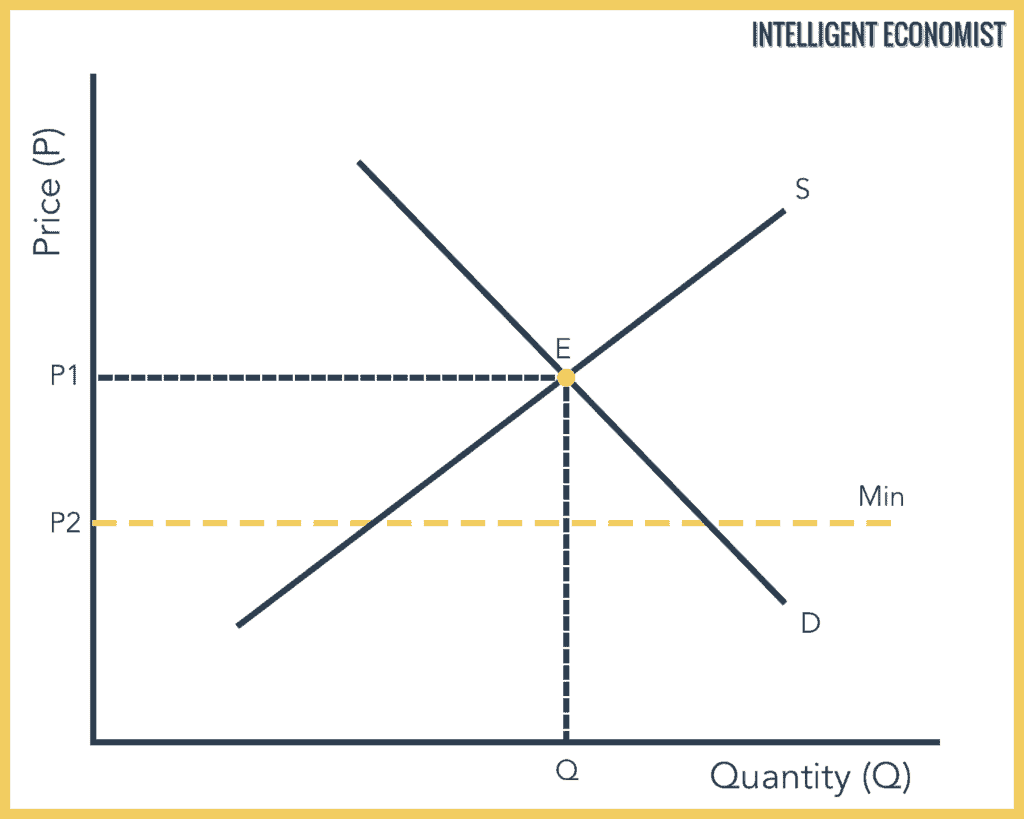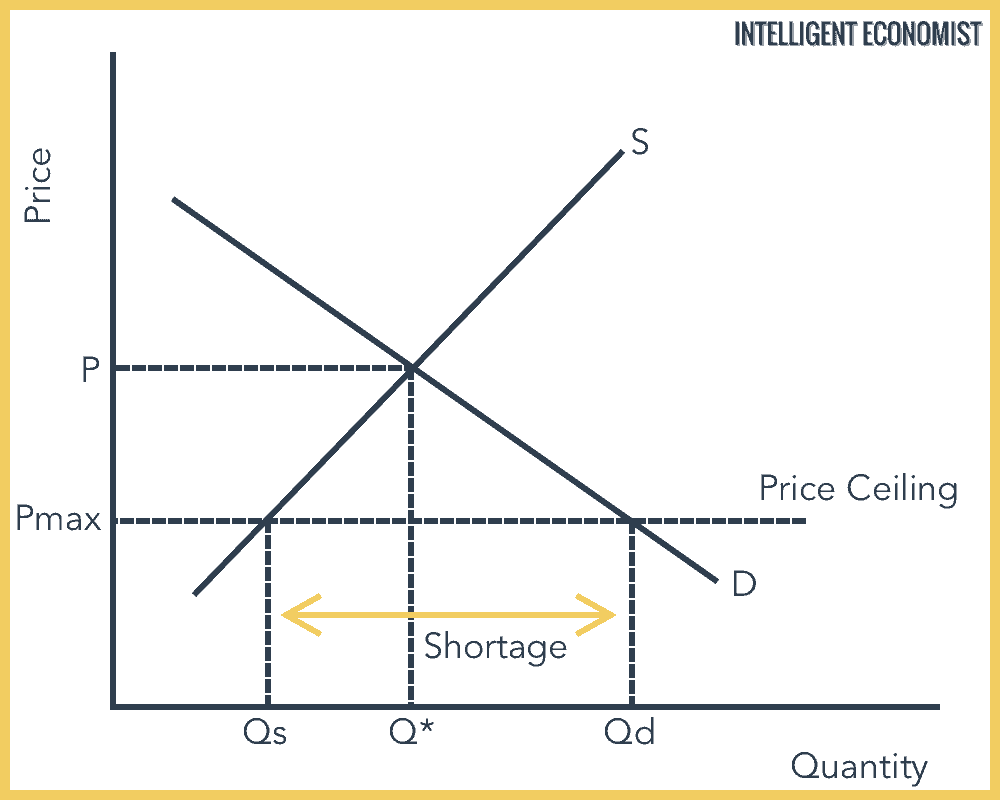When society or the government feels that the price of a commodity is too low policymakers impose a price floor establishing a minimum price above the market equilibrium.
Effective price floor creates a surplus.
Price floor is enforced with an only intention of assisting producers.
The current equilibrium is 8 per movie ticket with 1 800 people attending movies.
Efficiency and price floors and ceilings.
Government set price floor when it believes that the producers are receiving unfair amount.
Price floors are used by the government to prevent prices from being too low.
Implementing a price floor.
When the price is above the equilibrium the quantity supplied will be greater than the quantity demanded and there will be a surplus.
The original consumer surplus is g h j and producer surplus is i k.
The most common price floor is the minimum wage the minimum price that can be payed for labor.
If price floor is less than market equilibrium price then it has no impact on the economy.
The effect of government interventions on surplus.
Figure 2 b shows a price floor example using a string of struggling movie theaters all in the same city.
Example breaking down tax incidence.
Price and quantity controls.
A price floor is the lowest legal price a commodity can be sold at.
However price floor has some adverse effects on the market.
Minimum wage and price floors.
This is the currently selected item.
Price floors are also used often in agriculture to try to protect farmers.
Price ceilings and price floors.
A price floor must be higher than the equilibrium price in order to be effective.
How price controls reallocate surplus.



























